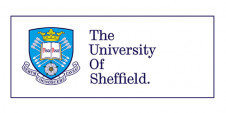The Possibilities of Virtual, Mixed and Augmented Reality for the Water Industry
Start Date
19.07.2018
End Date
19.07.2018
With advantages ranging from cost savings, time savings, space savings, to client relationship saving - these new technologies are transforming the way the Water Industry will plan and build it's facilities in the future whilst helping to de-risk the innovation process.
Starting from pen and paper, the water industry and it's supply chain has always been based on tools that enable designers to preview and analyse images and ideas, allowing them to plan which actions should be taken to physically assemble a model.
Relatively new technologies have been developed to project these ideas in a three-dimensional space; Technology such as computer-aided design (CAD), as well as 3D modelling and Building Information Modelling (BIM), are often used to show clients formats, spaces, and systems before a brick is laid.
However, previewing paper and flat computer-generated details still only provides practitioners with a limited experience of the finished building: certain faults related to construction and design arise only when the construction process has already started, and these issues force projects to stop, whilst the feasibility of the construction is reassessed. These problems are usually very difficult to spot on a digitally generated image, as even 3D models, due to their lack of depth, cannot visualise clearly exactly how the building or facility will look and feel like when built. Often, these shortcomings also affect business relationships as the designer’s vision for the completed structure fails to match the client’s: when on paper, in fact, it is very difficult for the client to communicate their exact needs, and at times the finalized project doesn’t correspond to the desired outcome.
Virtual Reality, as it was designed for gaming, is a tool that can immerse a person inside a virtually constructed environment. 3D modelling and BIM programs, which made huge advancements in the field of project modelling, can now be adapted to VR tools, to visualise a fully virtual representation of an idea in a new dimension at a relatively low cost point (costs which have reduced 5 fold in the last few years alone). Put simply, the user sees a 3D display through a headset and can get an ‘all-round’ view by turning their head to the side, up and down. The most obvious benefit of virtual reality for construction firms is that it can save time and money by allowing construction professionals to test any number of features before works starts. The VR headset allows all parties involved in the construction phase to identify potential conflicts or required changes at the design stage, rather than during construction, when they’re extremely costly to put right.
In addition to this, the client can experience the project virtually, which means they can assess if the finalized building looks and feels exactly how they imagined. For clients, being able to physically look around and visualise how a building will function before it has been built is a major advantage. It provides the opportunity to pick up on the smallest of details, like whether a piece of equipment will fit in a space, and give the contractor feedback accordingly. This greatly improves communication and collaboration between the two parties in an agreement. It provides the opportunity for more valuable input from all, and reduces the possibility for misunderstanding, which could sour future relationships.
TWENTY65 in association with the AMRC have a fact filled morning awaiting you.
We'd like to show you the facilities that we have - that you can access.
We'd like to share our experiences of projects that have embraced these new technologies, and how the projects have progressed.
I hope you can join us on the 19th July, for what promised to be an informative and thought provoking knowledge exchange.
The full agenda can be viewed here
Register for free here
